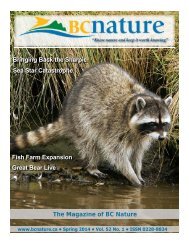monarch-esa-petition-final_61585
monarch-esa-petition-final_61585
monarch-esa-petition-final_61585
You also want an ePaper? Increase the reach of your titles
YUMPU automatically turns print PDFs into web optimized ePapers that Google loves.
Appendix A: Non-migratory Populations of Danaus plexippus plexippus<br />
Non-migratory populations of Danaus plexippus plexippus outside of the Americas<br />
During the mid- to late-1800’s and into the 1900’s <strong>monarch</strong>s spread across the Pacific to Hawaii,<br />
New Zealand, Australia, and many islands of Oceania (Brower 1995, Zalucki and Clarke 2004,<br />
Fig. 1, p. 114; see Figures 1 and 2 below). During this same time period, <strong>monarch</strong>s also<br />
colonized islands across the Atlantic, such as Bermuda and the Madeira and Canary Islands, and<br />
are now resident in the Azores and coastal areas of Spain as well (Haeger et al. 2011). Various<br />
lines of evidence point to more than one introduction event in the Pacific, with populations in<br />
Hawaii and Australia likely forming independently (Shephard et al. 2002, Lyons et al. 2012), and<br />
other Pacific islands being colonized by radiation from original areas (Zalucki and Clarke 2004,<br />
Fig. 1). Introduction and spread in the Atlantic and Spain have not been as well studied, but<br />
<strong>monarch</strong>s are regularly found off-course during fall migrations as far as the United Kingdom<br />
(Vane-Wright 1993, Brower 1995, p. 354).<br />
Figure 1, Appendix A. 1985 Range of Danaus plexippus plexippus outside the Americas. Figure<br />
2 from Vane-Wright 1993, original legend.<br />
Monarch ESA Petition 147




